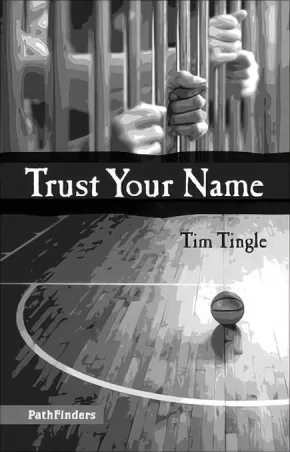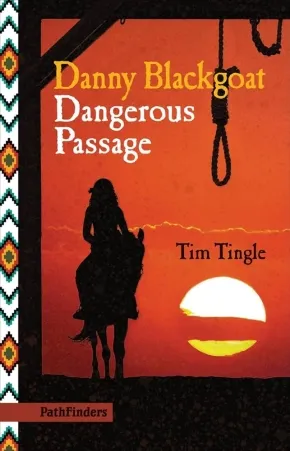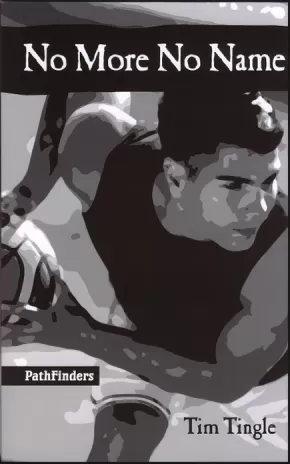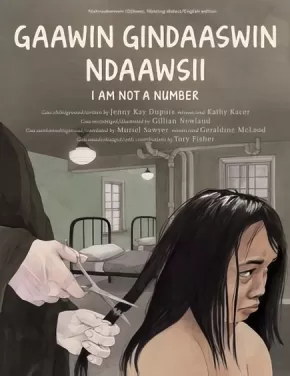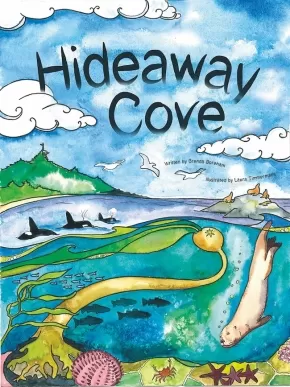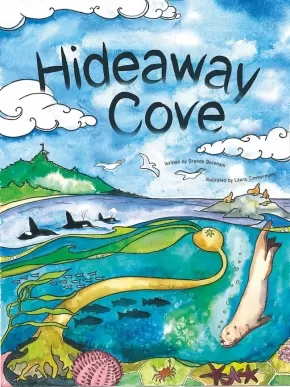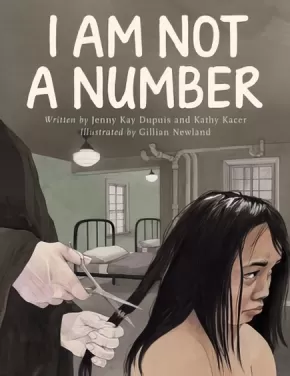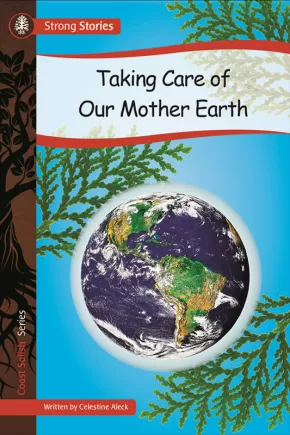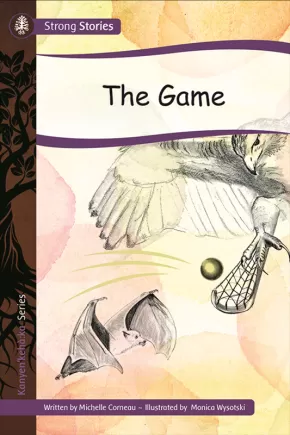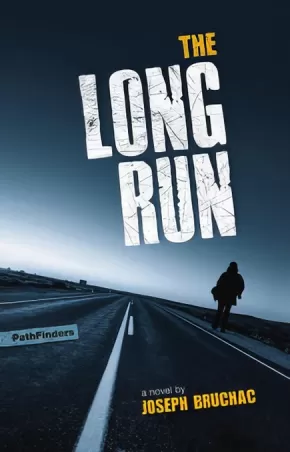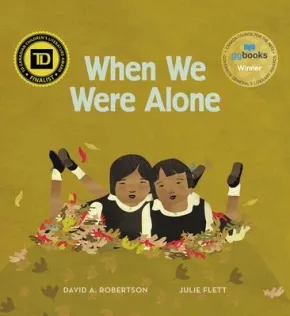
Reading
76
-
90
of
147 Results;
Sort By
Go To
of 10
Running on Empty
$10.50
Format:
Paperback
ISBN / Barcode: 9781459816534
Synopsis:
Synopsis:
Everyone expected Leon Kline, anchor for the 4x100 sprint relay, to secure Gilburn High's spot in the record books. But a freak accident on the final stretch changes everything. Suddenly his future is gone. No more running, no scholarship, no college. But then he meets sassy and straight-talking Casey De Vries, and life doesn't look quite so bleak. She even gets him running again. He can't sprint anymore, but he can handle longer distances. As he gets to know Casey better, he realizes that something is not quite right. How can he help her if she won't tell him what’s going on?
Educator & Series Information
This book is part of the Orca Sports series. Orca Sports stories engage middle-schoolers and teens with fast-paced plots and easy-to-read language. Topics include a variety of team and individual sports. Reading levels from grade 2.0 to 4.5; Interest level ages 10+.
Additional Information
176 pages | 4.25" x 7.00"
The Mask
$9.95
Format:
Paperback
ISBN / Barcode: 9781459818798
Synopsis:
Synopsis:
Fourteen-year-old Logan Grant is the star center for the Westside Wolves bantam hockey team. He has all the skills and all the looks, but he has alienated many of his teammates with his me-first attitude. One night Logan's life is forever changed when a fire sweeps through his house. He survives, but his face and body are badly burned. Too embarrassed to show his deformed face on the ice, Logan believes he'll never play hockey again until he stumbles across an old goalie mask that gives him the courage to get back to the rink. Taunted by the other players, Logan is defended by an unlikely ally, a teammate he once bullied because of his own facial disfigurement.
Reviews
"Another excellent sports-themed book for young people…Howling paints a very true picture of relationships between teens, their peer group, and parents, especially in the sports world which puts a different twist on relationships…An excellent book for [hockey] players and nonplayers."— CM Magazine, September 2018
"Howling's character development of Logan is exceptional."— Resource Links, October 2018
Educator & Series Information
This book is part of the Orca Sports series. Orca Sports stories engage middle-schoolers and teens with fast-paced plots and easy-to-read language. Topics include a variety of team and individual sports. Reading levels from grade 2.0 to 4.5; Interest level ages 10+.
Additional Information
160 pages | 7.00" x 4.25"
Trust Your Name
$12.95
Format:
Paperback
Text Content Territories:
Indigenous American; Native American; Choctaw;
ISBN / Barcode: 9781939053190
Synopsis:
Synopsis:
After Bobby Byington's unforgettable winning high school season, Coach Robison recruits Choctaw players from several communities to play in a summer league. Coach selects the Panther as the team's mascot, saying, "To many Choctaws, young and old, the Panther is an elder watching over us, helping us when we are in need." As the team gels and they move to the national tournament, they find out they are up against more than other basketball teams. They must deal with racist taunts and unfair sportsmanship on the court. The situation comes to a head when, on the eve of a key game against a bullying opponent, two Choctaw players are arrested for robbery. Never doubting their innocence, Coach Robison asks, "Who can we trust, and how can we find the truth?"
Educator & Series Information
Reading Level: 2.5
Recommended Ages: 12-16
This is the fourth book in the No Name series, which is part of the PathFinders series. The PathFinders series of Hi-Lo (high interest, low readability) novels offers the following features:
• Indigenous teen protagonists
• Age appropriate plots
• 2.5 – 4.5 Reading Level
• Contemporary and historical fiction
• Indigenous authors
The PathFinders series is from an American publisher. Therefore, Indigenous terminology in the PathFinders books is not the same as Canadian Indigenous terminology. This prompts a useful teaching moment for educators in discussing appropriate terminology use in Canada. The recommended ages for books in the PathFinders series are 12-16.
Additional Information
166 pages | 6.00" x 9.00"
Danny Blackgoat: Dangerous Passage
$12.95
Format:
Paperback
Text Content Territories:
Indigenous American; Native American; Navajo (Diné);
ISBN / Barcode: 9781939053152
Synopsis:
Synopsis:
In the 1860s the United States Army forced thousands of Navajos off their land and imprisoned them in unsafe conditions at Fort Sumner. Through the eyes of teenager Danny Blackgoat, readers experience how the Diné people struggled to survive.
In the concluding novel of the Danny Blackgoat trilogy, the major characters appear in a final scene of reckoning. Danny Blackgoat must face the charge of stealing a horse from Fort Davis––or reveal that his old friend, Jim Davis, stole the horse to help Danny escape. The penalty for horse theft in the 1860s? Death by hanging. Only the word of a Navajo woman can save both Danny and Jim Davis, but will she arrive at Fort Sumner before the bugles sound and the hanging begins?
Danny Blackgoat: Dangerous Passage is filled with history-based action, as the Diné people leave their imprisonment and return to Navajo country.
Educator & Series Information
This is the third book in the Danny Blackgoat series, which is part of the PathFinders series. The PathFinders series of Hi-Lo (high interest, low readability) novels offers the following features:
• Indigenous teen protagonists
• Age appropriate plots
• 2.5 – 4.5 Reading Level
• Contemporary and historical fiction
• Indigenous authors
The PathFinders series is from an American publisher. Therefore, Indigenous terminology in the PathFinders books is not the same as Canadian Indigenous terminology. This prompts a useful teaching moment for educators in discussing appropriate terminology use in Canada. The recommended ages for books in the PathFinders series are 12-16.
Additional Information
162 pages | 4.50" x 7.00"
No More No Name
$12.95
Format:
Paperback
Text Content Territories:
Indigenous American; Native American; Choctaw;
ISBN / Barcode: 9781939053176
Synopsis:
Synopsis:
Tim Tingle's first novel in the contemporary No Name series depicts the struggles of Choctaw teen Bobby Byington. A strong-willed and determined high school basketballer, Bobby must carve a path through the dark world of his father's alcoholism and angry nature. In the second book, No More No Name, Bobby's mother returns home, and Bobby's basketball team, galvanized by his impressive shooting skills, begins to win. But trouble looms when his father's cravings resurface "Son, I hope you never fully understand what I'm going through. Every day, every hour, every minute. An owl claws on me from inside my chest. The desire to have one-just one more drink-that is the owl."
Series Information
This is the second book in the No Name series, which is part of the PathFinders series. The PathFinders series of Hi-Lo (high interest, low readability) novels offers the following features:
• Indigenous teen protagonists
• Age appropriate plots
• 2.5 – 4.5 Reading Level
• Contemporary and historical fiction
• Indigenous authors
The PathFinders series is from an American publisher. Therefore, Indigenous terminology in the PathFinders books is not the same as Canadian Indigenous terminology. This prompts a useful teaching moment for educators in discussing appropriate terminology use in Canada. The recommended ages for books in the PathFinders series are 12-16.
Additional Information
168 pages | 4.50" x 7.00"
Gaawin Gindaaswin Ndaawsii / I Am Not A Number
$14.95
Artists:
Format:
Paperback
Text Content Territories:
Indigenous Canadian; First Nations; Anishinaabeg; Ojibway;
ISBN / Barcode: 9781772600995
Synopsis:
Synopsis:
Dual language edition of powerful children's book about residential school experience reflects Indigenous language revitalization.
The dual language edition, in Nishnaabemwin (Ojibwe) Nbisiing dialect and English, of the award-winning I Am Not a Number. When eight-year-old Irene is removed from her First Nations family to live in a residential school she is confused, frightened, and terribly homesick. She tries to remember who she is and where she came from, despite the efforts of the nuns who are in charge at the school and who tell her that she is not to use her own name but instead use the number they have assigned to her. When she goes home for summer holidays, Irene's parents decide never to send her and her brothers away again. But where will they hide? And what will happen when her parents disobey the law? Based on the life of co-author Jenny Kay Dupuis’ grandmother, I Am Not a Number is a hugely necessary book that brings a terrible part of Canada’s history to light in a way that children can learn from and relate to.
Reviews
"Residential and boarding school stories are hard to read, but they're vitally important... books like I Am Not a Number should be taught in schools in Canada, and the U.S., too."— Debbie Reese, American Indians in Children's Literature
"It’s important to teach children about true Canadian history, but it’s not easy to talk about it in a way that children will understand. I Am Not a Number is perfect to get the conversation about residential schools started with your children. It opens the door for them to ask questions about the subject and the story is relatable in a way they can follow."— Residential School Magazine
Educator Information
Recommended Ages: 7-11
Guided Reading: V
Dual-language: Nishnaabemwin (Ojibwe) Nbisiing dialect and English.
Subjects: Character Education (Empathy, Prejudice & Tolerance); History & Social Studies (Canadian History, First Nations & Indigenous Peoples); Government & Citizenship; Reflecting Diversity
This resource is also available in English: I Am Not a Number.
This resource is also available in French: Je ne suis pas un numero.
Additional Information
44 pages | 8.50" x 11.00" | Translated by Muriel Sawyer and Geraldine McLeod with contributions by Tory Fisher
Gang Tackle
$10.95
Format:
Paperback
ISBN / Barcode: 9781459812253
Synopsis:
Synopsis:
After budget cuts force the Southside Saints football team to disband, Jamal and his friends have to settle for playing pickup on the hardscrabble field behind their high school. Then the president of a sporting-goods company offers to donate $20,000 worth of equipment to the team. There's only one catch: he wants to be the coach. Thrilled to have a real team together, the players turn a blind eye to Coach Fort's racism, bullying and discrimination. Until he takes it too far. Now it’s up to Jamal and his teammates to take back their team and show what they’re made of.
Educator & Series Information
This book is part of the Orca Sports series. Orca Sports stories engage middle-schoolers and teens with fast-paced plots and easy-to-read language. Topics include a variety of team and individual sports. Reading levels from grade 2.0 to 4.5; Interest level ages 10+.
Additional Information
176 pages | 4.25" x 7.00"
Hideaway Cove (HC)
 $21.95
$21.95

Artists:
Format:
Hardcover
ISBN / Barcode: 9781771741347
Synopsis:
Synopsis:
Join us on a mid August day, on the wild and rocky shores of the Pacific Northwest Coast. From the orca to the tiniest barnacle, enjoy a colourful glimpse into the lives of the many creatures that live in, and around, Hideaway Cove.
Brenda Boreham and Laura Timmermans share with us, through words and illustrations, the many interconnections within a healthy marine eco-system.
Reviews
"Hideaway Cove is a must-have when teaching a seashore ecosystem unit. This book provides opportunities for students to share their connections with the seashore while they learn more about the interactions within the marine ecosystem.” – Cindy Haack, Canadian Teacher Magazine
“Hideaway Cove is a delightful, information-packed picture book that takes children through a day in the life of a west coast cove. Here, humans are noticeably absent, and the diverse plants and animals tell a wonderful tale. Brenda Boreham’s text is lyrical and rich in detail.” – Sheryl McFarlane, Hakai Magazine
Educator & Series Information
Each book in the By Day and By Night Nature Series focuses on a scene typical of a distinct west coast habitat, showing how living and non-living things are connected in a healthy ecosystem. As readers, we observe animals going about their daily activities: caring for their young, searching for food, and responding to the changes in light, temperature, and weather conditions throughout the day or night. The last four pages of each book provide facts about the highlighted animals and plants as well as features that are unique to their habitats. The final page suggests ways that young readers and their families can be respectful as they visit wilderness areas.
Readers with a sense of curiosity will find opportunities in these books to:
- use picture clues to predict the featured animal on the next page
- identify, count, and sequence numbers (1 owl, 2 deer, 3 squirrels, etc.)
- search for small creatures that travel from page to page
- discover patterns in the text and structure of the books
- track the movement of the sun, or moon, across the sky
Curriculum Links
Reading - Providing opportunities for guided practise in using reading strategies: visualizing, making connections, asking questions, transforming, and inferring.
Science - Supporting discussion and further exploration:
- characteristics of living things
- needs of living things
- connections between living and non-living things
- daily and seasonal changes
- animal growth and changes
- plant growth and changes
- weather
- habitats
- observable patterns in the sky
Numeracy - Counting and sequencing of numbers 1 to 10.
Social Responsibility - Initiating discussions about ways to take care of wilderness areas.
Search for a crab that travels from page to page in this story!
Additional Information
32 Pages | ISBN" 9781771741347 | Hardcover
Hideaway Cove (PB)
 $14.50
$14.50

Artists:
Format:
Paperback
ISBN / Barcode: 9781771741330
Synopsis:
Synopsis:
Join us on a mid August day, on the wild and rocky shores of the Pacific Northwest Coast. From the orca to the tiniest barnacle, enjoy a colourful glimpse into the lives of the many creatures that live in, and around, Hideaway Cove.
Brenda Boreham and Laura Timmermans share with us, through words and illustrations, the many interconnections within a healthy marine eco-system.
Reviews
"Hideaway Cove is a must-have when teaching a seashore ecosystem unit. This book provides opportunities for students to share their connections with the seashore while they learn more about the interactions within the marine ecosystem.” – Cindy Haack, Canadian Teacher Magazine
“Hideaway Cove is a delightful, information-packed picture book that takes children through a day in the life of a west coast cove. Here, humans are noticeably absent, and the diverse plants and animals tell a wonderful tale. Brenda Boreham’s text is lyrical and rich in detail.” – Sheryl McFarlane, Hakai Magazine
Educator & Series Information
Each book in the By Day and By Night Nature Series focuses on a scene typical of a distinct west coast habitat, showing how living and non-living things are connected in a healthy ecosystem. As readers, we observe animals going about their daily activities: caring for their young, searching for food, and responding to the changes in light, temperature, and weather conditions throughout the day or night. The last four pages of each book provide facts about the highlighted animals and plants as well as features that are unique to their habitats. The final page suggests ways that young readers and their families can be respectful as they visit wilderness areas.
Readers with a sense of curiosity will find opportunities in these books to:
- use picture clues to predict the featured animal on the next page
- identify, count, and sequence numbers (1 owl, 2 deer, 3 squirrels, etc.)
- search for small creatures that travel from page to page
- discover patterns in the text and structure of the books
- track the movement of the sun, or moon, across the sky
Curriculum Links
Reading - Providing opportunities for guided practise in using reading strategies: visualizing, making connections, asking questions, transforming, and inferring.
Science - Supporting discussion and further exploration:
- characteristics of living things
- needs of living things
- connections between living and non-living things
- daily and seasonal changes
- animal growth and changes
- plant growth and changes
- weather
- habitats
- observable patterns in the sky
Numeracy - Counting and sequencing of numbers 1 to 10.
Social Responsibility - Initiating discussions about ways to take care of wilderness areas.
Search for a crab that travels from page to page in this story!
Additional Information
32 Pages | ISBN: 9781771741330 | Paperback
I Am Not a Number
$19.95
Artists:
Format:
Hardcover
Text Content Territories:
Indigenous Canadian; First Nations; Anishinaabeg; Ojibway;
ISBN / Barcode: 9781927583944
Synopsis:
Synopsis:
When eight-year-old Irene is removed from her First Nations family to live in a residential school she is confused, frightened, and terribly homesick. She tries to remember who she is and where she came from, despite the efforts of the nuns who are in charge at the school and who tell her that she is not to use her own name but instead use the number they have assigned to her. When she goes home for summer holidays, Irene's parents decide never to send her and her brothers away again. But where will they hide? And what will happen when her parents disobey the law? Based on the life of co-author Jenny Kay Dupuis’ grandmother, I Am Not a Number is a hugely necessary book that brings a terrible part of Canada’s history to light in a way that children can learn from and relate to.
Awards
- 2018 Red Cedar Award for Information Book Winner
- 2018 Hackmatack Award Winner
Reviews
"Residential and boarding school stories are hard to read, but they're vitally important... books like I Am Not a Number should be taught in schools in Canada, and the U.S., too."— Debbie Reese, American Indians in Children's Literature
"It’s important to teach children about true Canadian history, but it’s not easy to talk about it in a way that children will understand. I Am Not a Number is perfect to get the conversation about residential schools started with your children. It opens the door for them to ask questions about the subject and the story is relatable in a way they can follow."— Residential School Magazine
"[A] powerful teaching tool that brings a terrible part of Canada’s history to light in a way that children can learn from and relate to. It is written in simple language and told in a way that will stimulate conversations about residential schools and the traumatic effects they have had on generations of First Nation families and communities. ... beautifully illustrated by Gillian Newland. She captures the somber mood of the school, the anguish of the children, the severity of the nuns and the desperation of the family. Students can easily empathize with Irene and her brothers as well as their parents as they try to imagine how they would feel or act in a similar situation." — Alberta Native News, December 2016
"Endless cross-curricular connections can be made using this story. But the most powerful aspect of this book is that it will open a dialogue, one that Justice Murray Sinclair spoke of as head of the Truth and Reconciliation Commission, a dialogue that needs to take place for reconciliation to happen." — ETFO Voice
Educator Information
Recommended Ages: 7-11
Guided Reading: V
This resource is also available in a dual-language format (English and Nishnaabemwin (Ojibwe) Nbisiing dialect): Gaawin Gindaaswin Ndaawsii / I Am Not A Number.
This resource is also available in French: Je ne suis pas un numero
Additional Information
32 pages | 8.50" x 11.00"
Strong Stories Coast Salish: Taking Care of Our Mother Earth
 $9.95
$9.95

Format:
Paperback
Text Content Territories:
Indigenous Canadian; First Nations; Salish; Coast Salish; Indigenous American; Native American; Salish; Coast Salish;
ISBN / Barcode: 9781771741286
Synopsis:
Synopsis:
In this Coast Salish story, it is explained how each family played a traditional role in taking care of our Mother Earth. From controlled burning to ethical hunting and fishing practices, the Coast Salish people were, and still are, taught by their elders to respect Mother Earth.
Educator & Series Information
Taking Care of Our Mother Earth is part of the Strong Stories: Coast Salish series. Strong Stories focus on different First Nation territories from across Canada and the United States. These stories reflect the belief that our stories are the roots of our people, our lands and our cultures. It is from our stories that we grow and become strong and proud.
This resource is also available in French: Prendre soin de notre Terre-Mère.
Additional Information
16 pages | 6.00" x 9.00" | ISBN: 9781771741286
Strong Stories Kanyen’keha:ka: The Game
 $9.95
$9.95

Format:
Paperback
Text Content Territories:
Indigenous American; Native American; Haudenosaunee (Iroquois); Kanyen'keha:ka (Mohawk); Indigenous Canadian; First Nations; Haudenosaunee (Iroquois); Kanyen'keha:ka (Mohawk);
ISBN / Barcode: 9781771741187
Synopsis:
Synopsis:
The animals and the birds are getting ready for a game of lacrosse. Bat would love to play but neither team wants him because he is different than them. This Kanyen'kehà:ka (Gan-yeh-ga-ha-ga) story is about how we all have a special talent that we must respect in others. The book also includes information about lacrosse. The Kanyen'kehà:ka is one of Six Nations that together are the Haudenosaunee.
Educator & Series Information
The Game is part of the Strong Stories: Kanyen’kehà:ka series. Strong Stories focus on different First Nation territories from across Canada and the United States. These stories reflect the belief that our stories are the roots of our people, our lands and our cultures. It is from our stories that we grow and become strong and proud.
This resource is also available in French: La partie.
Additional Information
16 pages | 6.00" x 9.00" | ISBN: 9781771741187
The Long Run
$12.95
Format:
Paperback
Text Content Territories:
Indigenous American; Native American;
ISBN / Barcode: 9781939053091
Synopsis:
Synopsis:
Follow Travis Hawk on a cross-country trek as he escapes a world of brutality and uncertainty and puts his trust, and even his very life, in the hands of total strangers. Travis's story is one of struggle, survival, risk, and resilience, navigating a solo journey of hundreds of miles to seek a safe haven, far from the demons of his past.
Reviews
"The Long Run is a stirring story about a young man who empowers himself to succeed against the odds. Travis Hawk is a pathfinder indeed."
— Tribal College Journal of American Indian Higher Education, August 2017
Educator & Series Information
Reading Level: 2.5
Recommended Ages: 12 to 16
This book is a PathFinders series Hi/Lo reader, a high interest, low readability book that supports reluctant or struggling readers.
Additional Information
120 pages | 4.50" x 7.00"
When We Were Alone
$21.95
Artists:
Format:
Hardcover
Text Content Territories:
Indigenous Canadian; First Nations; Cree (Nehiyawak);
ISBN / Barcode: 9781553796732
Synopsis:
Synopsis:
When a young girl helps tend to her grandmother’s garden, she begins to notice things that make her curious. Why does her grandmother have long, braided hair and beautifully coloured clothing? Why does she speak another language and spend so much time with her family? As she asks her grandmother about these things, she is told about life in a residential school a long time ago, where all of these things were taken away. When We Were Alone is a story about a difficult time in history, and, ultimately, one of empowerment and strength.
Reviews
"When We Were Alone is rare. It is exquisite and stunning, for the power conveyed by the words Robertson wrote, and for the illustrations that Flett created. I highly recommend it." — Debbie Reese, American Indians in Children's Literature.
"…Robertson handles a delicate task here admirably well: explaining residential schools, that shameful legacy, and making them understandable to small children. It’s a dark history, and the author doesn’t disguise that, but he wisely focuses the grandmother’s tale on how, season by season, the students use creativity, imagination, and patience to retain their sense of identity. A beautifully quiet, bold strength arises from the continued refrain “When we were alone” and in how the children insisted on being themselves. Flett’s gorgeous, skillful illustrations have a flattened, faux naïve feel to them, like construction paper collage, a style that works perfectly with the story. She nicely contrasts the school’s dull browns and grays with the riotous colors surrounding Nókom and gets much expression from her simple silhouettes. Spare, poetic, and moving, this Cree heritage story makes a powerful impression." — Kirkus Reviews
"When We Were Alone addresses the topic of residential schools and, just as importantly, aspects of Cree culture and language. There is such gentleness about When We Were Alone that makes it an appropriate book for the even youngest of readers. Simply put, this is a much-needed book. Highly Recommended." — Dr. Kristen Ferguson, CM Magazine
"Robertson's text moves between the present and the past, the girl's questions and Nókom's memories, which deepen and intensify the quiet, powerful way she lives out her own culture, day by day, in the present. A beautifully rendered story of resisitance and love, this is made all the more luminous by Flett's art - not just by flashes of fuschsia or scarlet among ochre grasses, but by her precisely observed images of the compact bodies of the uniformed children, bowed beneath the weight of the scissors, or lovingly tending each other's hair. Highly recommended." — Deirdre Baker, Toronto Star
"When We Were Alone is a story about finding the strength to push forward when everything is against you. It follows a young girl asking her grandmother questions to learn more about her past. The grandmother shares her experience of a time when she was unable to make her own decisions and how she got through it." — The Dalai Lama Center
Educator Information
Recommended Grades: 3 and under.
Grades 10-11 BC English First Peoples resource for the unit First Steps - Exploring Residential School and Reconciliation through Children's Literature.
This book is also available in Swampy Cree syllabics and Roman orthography, as well as the original English: Ispík kákí péyakoyak/When We Were Alone
This resource is also available in French: Quand on etait seuls
Additional Information
24 pages | 8.50" x 7.50" | colour illustrations
Amik Loves School
$9.95
Artists:
Format:
Paperback
Text Content Territories:
Indigenous Canadian; First Nations; Anishinaabeg;
ISBN / Barcode: 9781553795230
Synopsis:
Synopsis:
Amik tells Moshoom about his wonderful school. Then his grandfather tells him about the residential school he went to, much different from Amik’s school. So Amik has an idea….
Amik Loves School is one book in The Seven Teachings Stories series.The Seven Teachings of the Anishinaabe—love, wisdom, humility, courage, respect, honesty, and truth—are revealed in seven stories for children. Set in urban landscapes, Indigenous children tell familiar stories about home, school, and community.
Educator Information
Find the French translation of this book here: Amik aime l'ecole.
This book is part of The Seven Teachings Stories series, which are inspired by the Seven Sacred Teachings of the Anishinaabe—love, wisdom, humility, courage, respect, honesty, and truth. These stories are set in urban landscapes, where Indigenous children tell familiar stories about home, school, and community.
Additional Information
24 pages | 6.00" x 8.00"
Sort By
Go To
of 10




